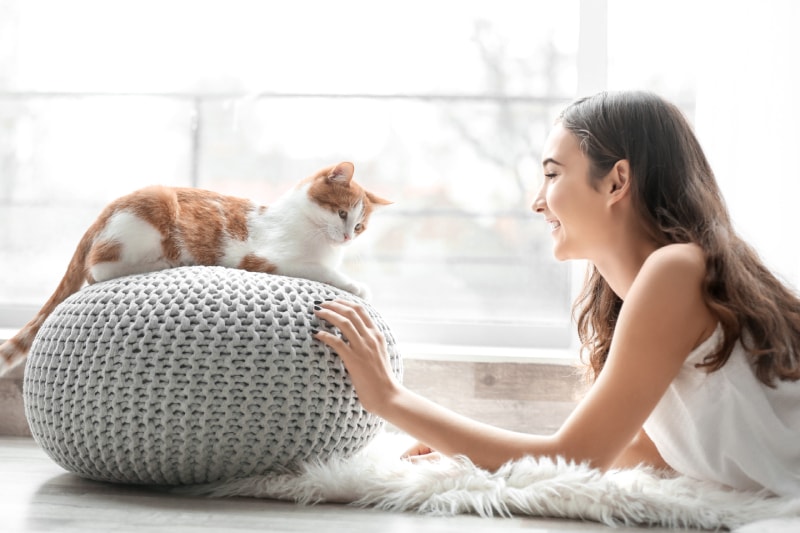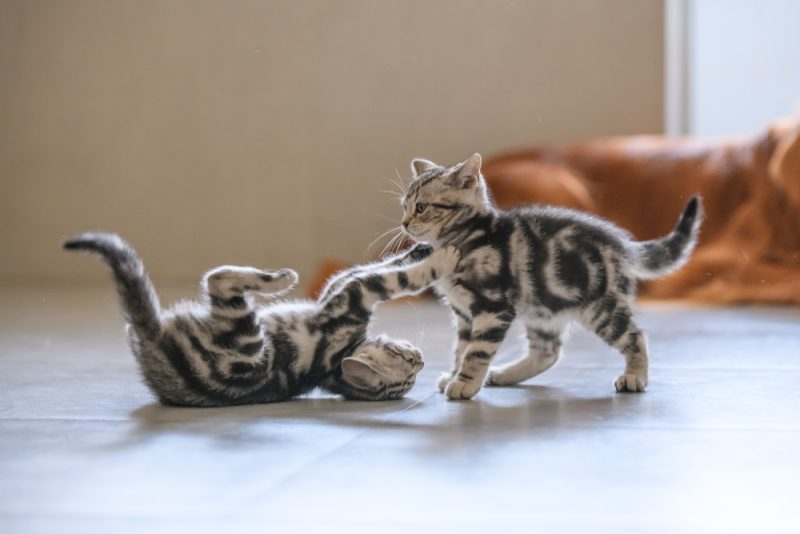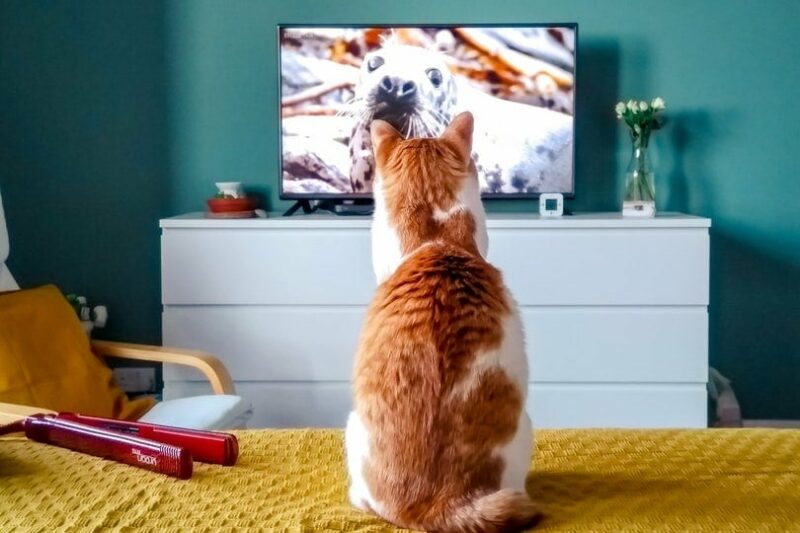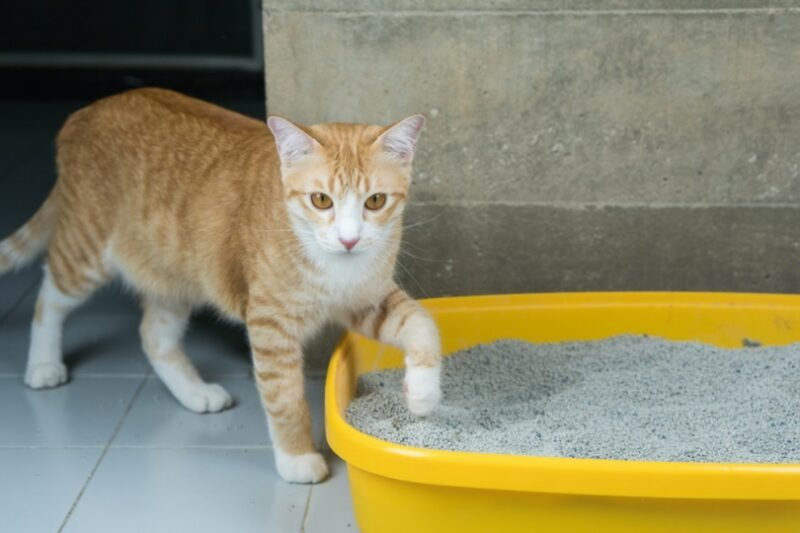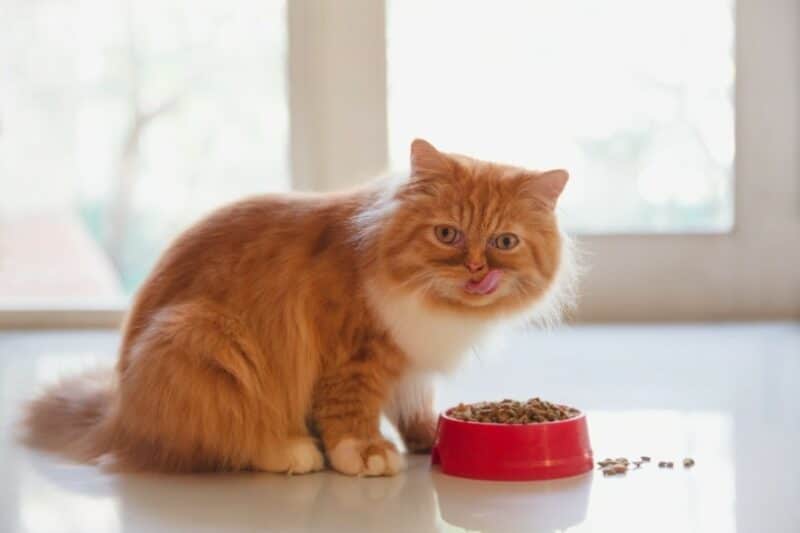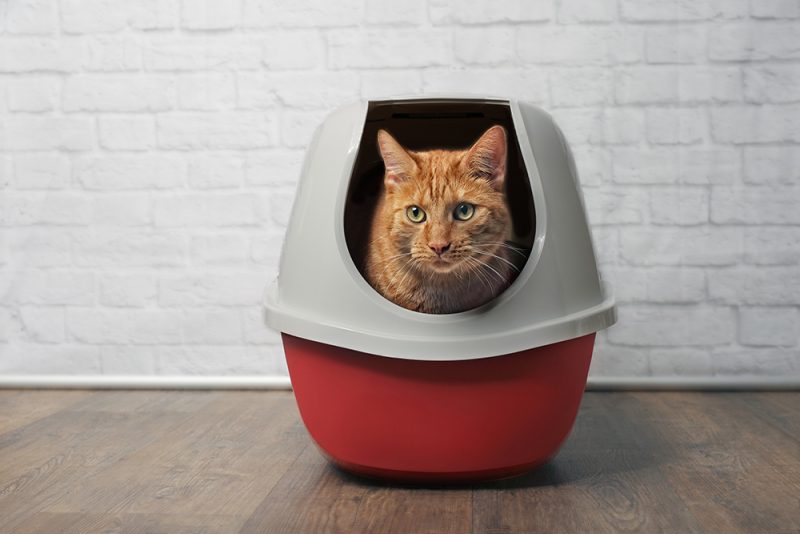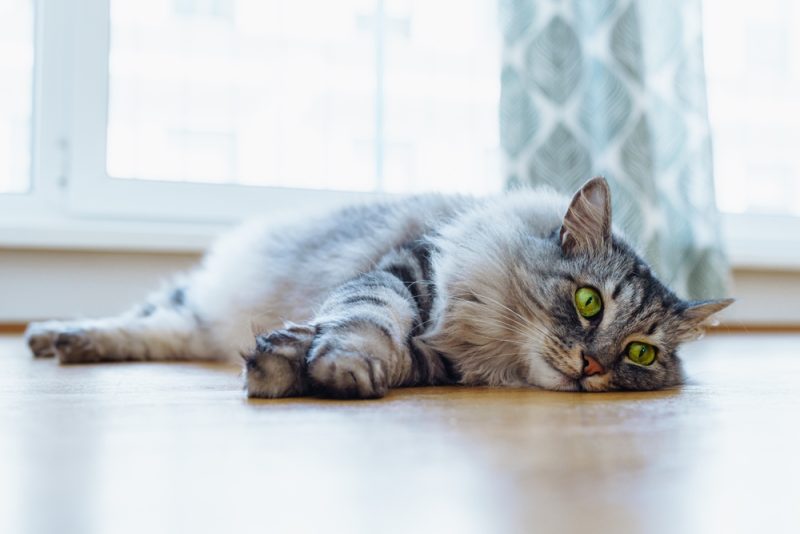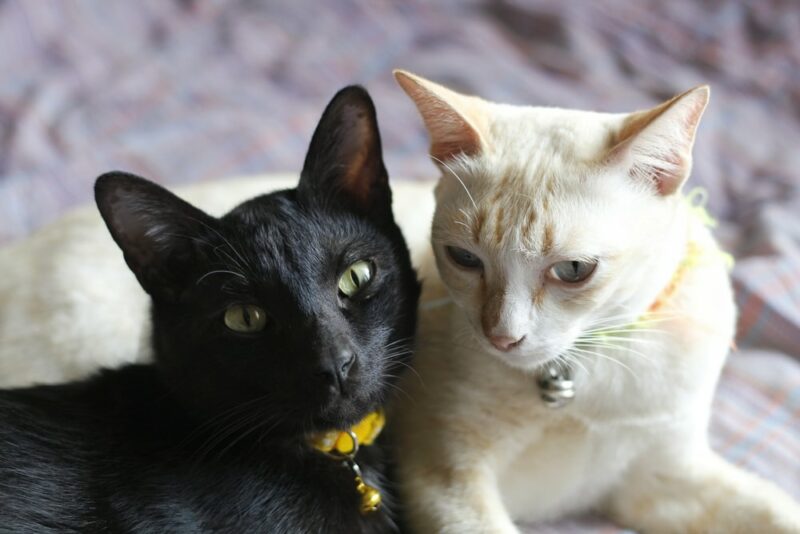When we decide to welcome a cat into our home, we can expect a few changes to occur. Your bathroom will have a litterbox that takes up space, your lounge might be littered with your cat’s favorite toys, and your once pristine furniture is now covered in cat hair.
Understandably, cat owners may seek out ways to make sharing their home with a cat more pleasant for both them and their cat.

The 6 Tips for Sharing Your Home with Cats
1. Maintain a Proper Cleaning Schedule
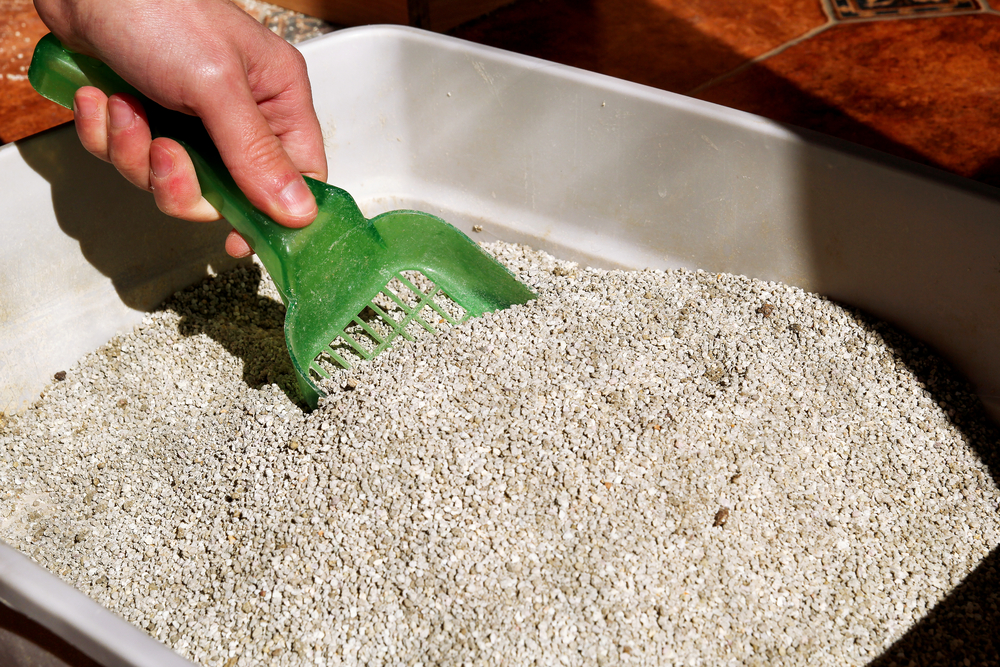
Cats bring love and joy into our homes, shortly followed by cat hair, and tracked litter problems you never had before. Although it can be challenging to maintain the same cleaning schedule you had before your cat, it’s a good idea to create a new one.
Keeping your home clean when owning cats is possible but can take more effort than before. Don’t skimp on vacuuming your floors and furniture when you have the chance, ideally once or twice a week. You could try vacuuming your home in sections too, so try doing half of the house one day and another section the next day.
Wipe your countertops to remove cat hair and to keep them hygienic. Having a dustpan and brush nearby to quickly scoop up tracked cat litter is a great idea. You could try making a monthly cleaning schedule on your phone or calendar to keep up a good cleaning schedule.
You will also need to clean your cat’s supplies and food and water bowls when necessary, so don’t forget to include them on the cleaning schedule.
2. Try Lint Rollers to Help Remove Cat Hair
Cat hair can cling stubbornly to your furniture, clothes, and linen. This is where a lint roller can come in handy since it is unlikely that you will want to vacuum up the hair every day. Lint rollers have sticky attachments that remove clumps of cat hair at once. They can be used on most surfaces, whether it is your clothes, bed, or couch.
Although most types of lint rollers will work, there are lint rollers specifically made for cat hair. If you don’t find one at your local grocer or pet store, you can find them online too.
3. Invest in a Pet-Friendly Vacuum Cleaner
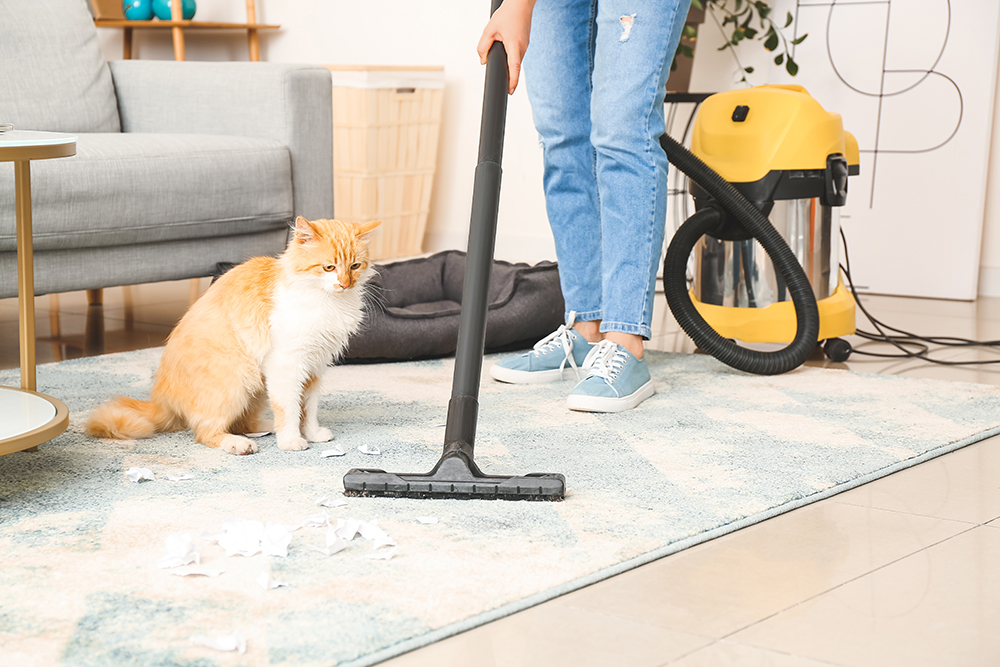
Certain household vacuums are not equipped to clean up large amounts of cat hair, which can leave it damaged or frequently clogged. This is why investing in a pet-friendly vacuum cleaner is a good choice.
Pet-friendly vacuum cleaners are designed to handle cat hair and have several features that make vacuuming cat hair and litter easier. Furthermore, pet-friendly vacuum cleaners are perfect for removing stubborn cat hairs from your carpets. A downside to these types of vacuum cleaners is that they might be more expensive than standard household vacuums. However, the benefits they offer are usually worth the price.
4. Choose Cat Supplies That Match the Theme of Your Home
If you enjoy an orderly home that is set up according to a specific theme, you might want to consider choosing cat supplies that match it. If you have a modern-looking bathroom with a white or grey color theme, placing a bright pink litterbox might be a distraction. You would probably prefer a grey or white modern-looking litterbox instead.
You can do this with your cat’s other supplies too, such as their beds or food and water bowls. This allows you to maintain your preferred theme in your home without limiting your cat’s supplies or feeling like it doesn’t belong in your home.
5. Use a Storage Tub or Basket for Cat Toys
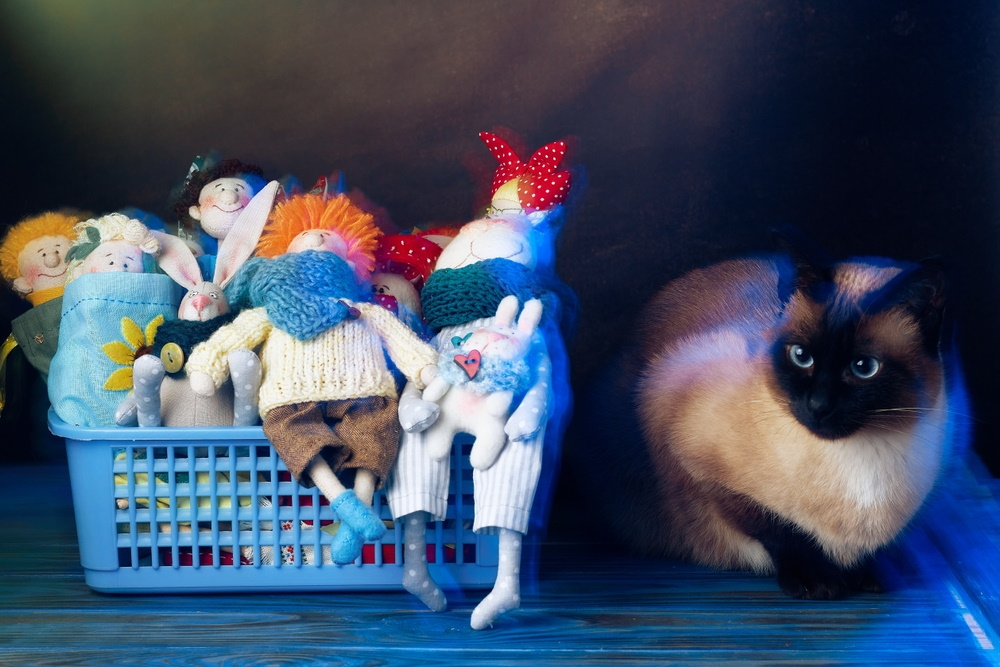
Most cats play with their toys whenever they feel like it. However, these toys likely get left around the house when it’s not in use. A great way to keep your cat’s toys tidy is to place them in a storage tub or basket that your cat can easily access.
When you find scattered cat toys in your home, you can store them instead of leaving them lying around. This is also helpful if you want to keep track of all your cat’s toys to prevent one from getting stepped on or going missing.
Finding a toy that your cat enjoys, is genuinely drawn to, and is excited to play with can be a challenge. That's why having a few options is always a good idea until you get an idea of what gets them moving. We love the Hepper Catnip Stick and Whale Kicker for different reasons. For cats who need a little encouragement in playing, the stick is packed full of organic catnip enticing enough to lure in the laziest of felines. The Whale is a great option for cats who love to hunt, pounce, and kick! Both are extremely durable, and can be cleaned and reintroduced for play days yet to come. Find out which is best suited to you below. At Catster, we’ve admired Hepper for many years and decided to take a controlling ownership interest so that we could benefit from the outstanding designs of this cool cat company!
Image
Product
Details
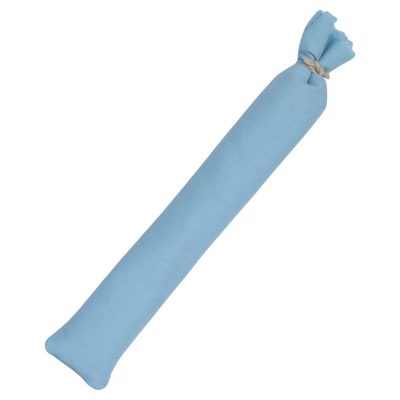
Hepper Catnip Stick
Check Price
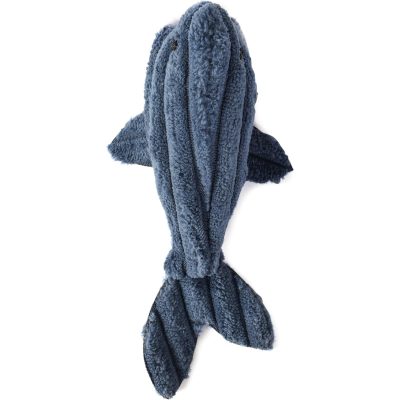
Hepper Whale Plush
Check Price
6. Create a Safe Environment
Numerous things in your home could be unsafe for your cat. Therefore, cat-proofing your home is essential. Any electrical cords will need to be secured out of your cat’s reach, as they can be a dangerous “toy” for cats.
Toxic plants, cleaning products, and medications should be stored away where your cat cannot access them. Open bodies of water such as pools and ponds should be covered or secured to prevent your cat from accidentally falling in.
If you enjoy using strong air fresheners, candles, or essential oils around your home, you might need to give them up. Those scents can be overpowering to a cat’s sensitive nose and release toxins that are not good for them. Also, essential oils like citrus and eucalyptus could be toxic to cats.

In Conclusion
It may take a while to adjust to sharing your home with a cat. Sharing your home with a cat requires patience and sacrifices to make the home comfortable for both of you. You will need to adjust to a new cleaning schedule and make space available for all your cat’s supplies.
It might be necessary to give up toxic items in your home to keep your cat safe, and perhaps spend money on a pet-friendly vacuum cleaner.
Featured Image Credit: Africa Studio, Shutterstock
